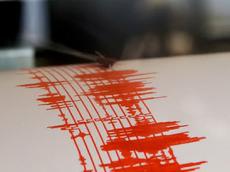|
|
TODAY.AZ / Weird / Interesting
How to Prepare for an Earthquake
15 August 2012 [09:05] - TODAY.AZ
 An earthquake is a very dangerous natural disaster. After an earthquake, your home may be a mess and you might be left without a water supply and energy. There are several things you can do to prepare for an earthquake before it happens, to minimize the damage and potential for injury in and around your home. You also have to drop, cover and hold steps.
An earthquake is a very dangerous natural disaster. After an earthquake, your home may be a mess and you might be left without a water supply and energy. There are several things you can do to prepare for an earthquake before it happens, to minimize the damage and potential for injury in and around your home. You also have to drop, cover and hold steps.Seven Steps to Earthquake Safety:
Step 1: Check for hazards inside your home and begin to fix them
Reducing and/or eliminating hazards throughout your home, neighborhood, workplace and school can greatly reduce your risk of injury or death following the next earthquake or other disaster. Conduct a "hazard hunt" to help identify and fix things such as unsecured televisions, computers, bookcases, furniture, unstrapped water heaters, etc. Securing these items now will help to protect you tomorrow.
Step 2: Create a Disaster Preparedness Plan
Planning for an earthquake, terrorist attack, or other emergency is not much different from planning for a party or vacation. Make sure that your emergency plan includes evacuation and reunion plans; your out-of-state contact person`s name and number; the location of your emergency supplies and other pertinent information. By planning now, you will be ready for the next emergency.
Step 3: Make disaster kits
Everyone should have disaster supplies kits stored in accessible locations at home, at work and in your vehicle. Having emergency supplies readily available can reduce the impact of an earthquake, a terrorist incident or other emergency on you and your family. Your disaster supplies kits should include food, water, flashlights, portable radios, batteries, a first aid kit, cash, extra medications, a whistle, fire extinguisher, etc.
Step 4: Is your place safe?
Most houses are not as safe as they could be. Whether you are a homeowner or a renter, there are things that you can do to improve the structural integrity of your home. Some of the things that you might consider checking include inadequate foundations, unbraced cripple walls, soft first stories, unreinforced masonry and vulnerable pipes. Consult a contractor or engineer to help you identify your building`s weaknesses and begin to fix them now.
Step 5: DROP, COVER, and HOLD ON!
Learn what to do during an earthquake, whether you`re at home, at work, at school or just out and about. Taking the proper actions, such as "Drop, Cover, and Hold On", can save lives and reduce your risk of death or injury. During earthquakes, drop to the floor, take cover under a sturdy desk or table, and hold on to it firmly. Be prepared to move with it until the shaking stops.
Step 6: Check it out!
One of the first things you should do following a major disaster is to check for injuries and damages that need immediate attention. Make sure you are trained in first aid and in damage assessment techniques. You should be able to administer first aid and to identify hazards such as damaged gas, water, sewage and electrical lines. Be prepared to report damage to city or county government.
Step 7: Communicate and recover!
Following a major disaster, communication will be an important step in your recovery efforts. Turn on your portable radio for information and safety advisories. If your home is damaged, contact your insurance agent right away to begin your claims process.
/wikihow.com/
URL: http://www.today.az/news/interesting/111228.html
 Print version
Print version
Views: 2830
Connect with us. Get latest news and updates.
See Also
- 19 February 2025 [22:20]
Visa and Mastercard can return to Russia, but with restrictions - 05 February 2025 [19:41]
Japan plans to negotiate with Trump to increase LNG imports from United States - 23 January 2025 [23:20]
Dubai once again named cleanest city in the world - 06 December 2024 [22:20]
Are scented candles harmful to health? - 23 November 2024 [14:11]
Magnitude 4.5 earthquake hits Azerbaijan's Lachin - 20 November 2024 [23:30]
Launch vehicle with prototype of Starship made its sixth test flight - 27 October 2024 [09:00]
Fuel prices expected to rise in Sweden - 24 October 2024 [19:14]
Turkiye strikes terror targets in Iraq and Syria - 23 October 2024 [23:46]
Kazakhstan supplied almost entire volume of oil planned for 2024 to Germany in 9 months - 23 October 2024 [22:17]
Taiwan reported passage of Chinese Navy aircraft carrier near island
Most Popular
 100 million is wasted: who pays for the fake history of the South Caucasus
100 million is wasted: who pays for the fake history of the South Caucasus
 New free trade accord reached between India and New Zealand
New free trade accord reached between India and New Zealand
 "Garegin's days are numbered" is another reminder warning to the Armenian Catholicos
"Garegin's days are numbered" is another reminder warning to the Armenian Catholicos
 Opening of regional communications: equating to TRIPP
Opening of regional communications: equating to TRIPP
 Azerbaijan’s FM honors Colombian Ambassador as he concludes mission
Azerbaijan’s FM honors Colombian Ambassador as he concludes mission
 Final statements delivered in trial of Armenian citizens at Baku Military Court
Final statements delivered in trial of Armenian citizens at Baku Military Court
 Presentation of 'Asaf Zeynalli Selected Works' held online from Australia
Presentation of 'Asaf Zeynalli Selected Works' held online from Australia
